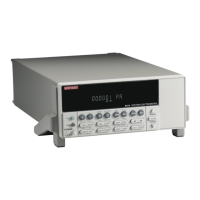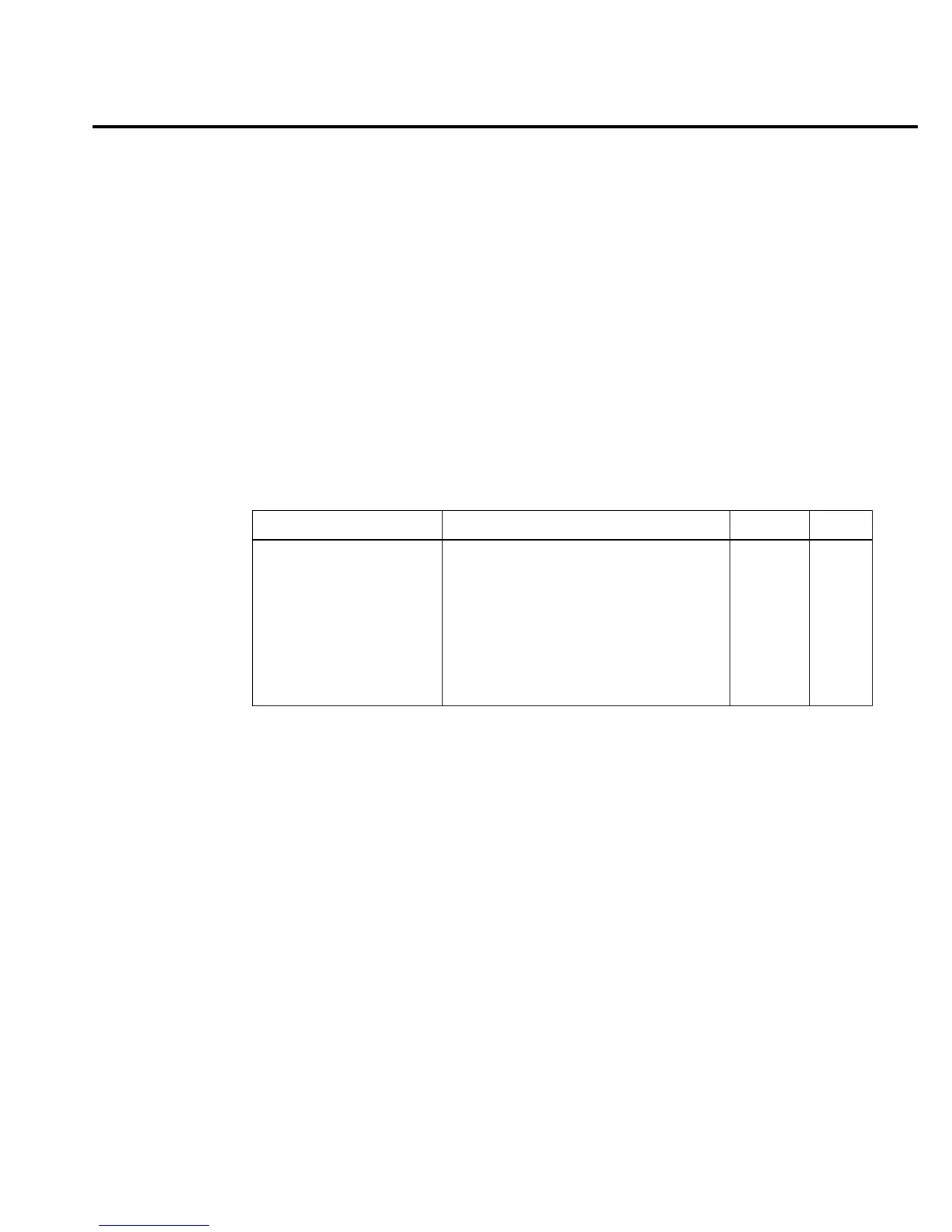Measurement Concepts 2-15
NOTES Zero check will enable whenever the ohms function is selected.
Model 6514 will remain zeroed even if it is upranged. If downranged, re-zero the
instrument.
Model 6514 does not have to be re-zeroed as long as the ambient temperature remains
stable.
Zero correction cancels the voltage offset term of the amplifier. With both zero check
and zero correct enabled, the instrument may not display a perfectly zeroed reading.
If Model 6514 is operating at, or near T
CAL
, zero correction will have very little affect.
T
CAL
is the internal temperature of Model 6514 when it was last calibrated.
SCPI programming — zero check and zero correct
A) SYSTem:ZCORrect[:STATe] <b>
This method to perform zero correction is consistent with the way it is performed from the
front panel. That is, zero correction is performed while zero check is enabled:
SYST:ZCH ON ‘ Enable zero check.
SYST:ZCOR ON ‘ Perform zero correction.
A second method to perform zero correction is to first acquire the zero correct value (see
Ref. B).
Table 2-4
SCPI commands — zero check and zero correct
Commands Description Default Ref
SYSTem SYSTem Subsystem:
:ZCHeck <b> Enable or disable zero check. ON
:ZCORrect Zero correct:
[:STATe] <b> Enable or disable zero correct. OFF A
:ACQuire Acquire a new zero correct value. B
INITiate Trigger a reading. B

